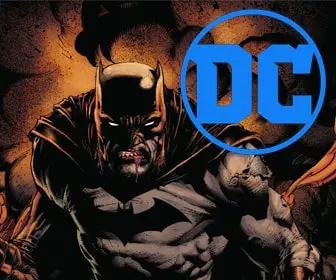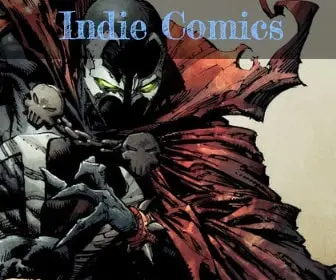
The Magnetic Mastermind: Delving into the Complex World of Marvel’s Magneto
In the vast universe of Marvel Comics, few characters are as complex and compelling as Magneto. Born Max Eisenhardt and also known as Erik Lehnsherr, Magneto has been both a villain and a hero, a terrorist and a savior. This post explores the multifaceted nature of Magneto, his powers, his motivations, and his enduring legacy in the Marvel Universe.
The Origins of Magneto
Magneto first appeared in “X-Men #1” in 1963, created by writer Stan Lee and artist Jack Kirby. His backstory is a tapestry woven with tragedy and triumph. As a Holocaust survivor, the horrors Magneto witnessed and endured greatly shaped his worldview. His experiences instilled in him a fierce determination to protect mutantkind from a similar fate, often at any cost. This traumatic past makes Magneto one of the most relatable and profound characters, as his motivations are deeply rooted in real-world issues.
Powers and Abilities
Magneto possesses the ability to generate and control magnetic fields, manipulating metal, electricity, and even the Earth’s magnetosphere. His powers extend to an impressive range, allowing him to levitate, create force fields, and manipulate metal structures. Beyond his magnetic abilities, Magneto is a genius with extensive knowledge in various scientific fields, a skilled strategist, and a natural leader. These attributes make him a formidable opponent and a powerful ally.
The Motivations of Magneto
What sets Magneto apart is his complex morality. He is not evil for the sake of being evil; rather, his actions are driven by a desire to protect mutants from persecution. Magneto views himself as a freedom fighter, advocating for mutant supremacy as a means to secure safety and respect for all mutants. His methods, however, often involve violence and coercion, bringing him into direct conflict with humans and even other mutants, most notably the X-Men.
Magneto and the X-Men
The relationship between Magneto and the X-Men, particularly with Professor Charles Xavier, is central to both characters’ stories. While they share a mutual respect and often a close friendship, their differing philosophies place them at odds. Xavier’s dream of peaceful coexistence between mutants and humans contrasts sharply with Magneto’s more militant approach to achieving mutant liberation. This dynamic has led to countless conflicts but also moments of alliance and mutual support.
Legacy and Influence
Magneto’s influence extends beyond the comic book pages. He has been a central figure in cartoons, movies, and merchandise, becoming one of the most recognized and enduring characters in the superhero genre. His ethical ambiguity and rich backstory make him a favorite among fans and a subject of extensive analysis and discussion. Magneto challenges readers and viewers to consider the nature of right and wrong, the consequences of trauma, and the fight for justice.
Collectors
For fans of Magneto, certain comic book issues capture the essence of his character, showcasing his complexities, powers, and evolution from villain to anti-hero. Here are five essential comic book issues that every Magneto enthusiast should consider adding to their collection:
- X-Men #1 (1963) – Created by Stan Lee and Jack Kirby, this is where it all began. The debut of Magneto as the X-Men’s first and most enduring adversary sets the stage for decades of stories to come. In this issue, readers are introduced to Magneto’s mission and powers, as he begins his campaign against humanity and comes into conflict with the X-Men.
- X-Men #112 (1978) – “Magneto Triumphant!” This issue is a classic that features one of the many epic battles between Magneto and the X-Men. It stands out because it showcases Magneto’s power and intellect, as he defeats the X-Men single-handedly, truly establishing himself as one of the most powerful mutants.
- Uncanny X-Men #150 (1981) – “I, Magneto…” In this significant issue, Magneto confronts the consequences of his actions and the realization of becoming what he hated most. It’s a turning point for his character, delving into his Holocaust survivor background and starting a path toward a more complex and somewhat sympathetic character.
- X-Men: God Loves, Man Kills (1982) – This graphic novel isn’t a single issue but is an essential read for any Magneto fan. It’s a profound story that further explores the themes of prejudice and extremism. Magneto and the X-Men join forces against a common enemy, showcasing the nuances of Magneto’s character as both a militant leader and an unexpected ally.
- Magneto #0 (1993) – This issue is a retrospective that includes a reprint of a classic Magneto story from “Classic X-Men” and a new tale that delves into Magneto’s past, including his childhood and time in Auschwitz. It’s a crucial narrative for fans who want to understand the depth and sources of Magneto’s pain and motivations.
Denouement
Magneto remains one of Marvel’s most iconic and enduring characters. His journey from villain to anti-hero to sometimes hero reflects the complexities of his character and the ever-evolving nature of the world around him. Whether as a feared adversary or a respected leader, Magneto’s presence in the Marvel Universe is a constant reminder of the fine line between heroism and villainy, the depth of human (and mutant) suffering, and the perpetual struggle for acceptance and respect. His story is a poignant exploration of the human condition, making Magneto much more than just a character with superpowers; he is a symbol of resilience, a testament to the enduring human spirit, and a mirror reflecting our own struggles with morality, identity, and the quest for a better world.















